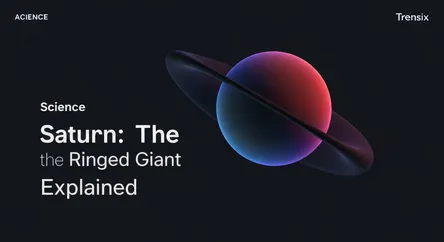Science
Saturn: The Ringed Giant Explained

Discover Saturn, the stunning ringed giant of our solar system. Learn about its composition, famous rings, and its role in space exploration.
What is it?
Saturn is the sixth planet from the Sun and the second-largest in our solar system, after Jupiter. It is a gas giant, primarily composed of hydrogen and helium, lacking a solid surface. Saturn is most famous for its spectacular and complex system of icy rings, which are visible even with a small telescope. It also has dozens of moons, including Titan, the second-largest moon in the solar system, which has its own thick atmosphere.
Why is it trending?
Saturn remains a hot topic due to ongoing discoveries. The James Webb Space Telescope continues to provide breathtaking, high-resolution images of the planet and its rings, revealing new atmospheric details. Furthermore, scientists are still analyzing data from the Cassini mission, which ended in 2017, uncovering new insights about the potential for life on moons like Enceladus, which has a subsurface ocean. The mystery of how its iconic rings formed and their eventual fate also keeps astronomers engaged.
How does it affect people?
Studying Saturn drives technological innovation and deepens our understanding of planetary formation and the origins of our solar system. Missions to Saturn require developing advanced robotics, communication systems, and instruments that often lead to practical applications on Earth. On a cultural level, Saturn's beauty inspires wonder and encourages public interest in science and space exploration, motivating new generations to pursue careers in STEM fields and pushing the boundaries of human knowledge.